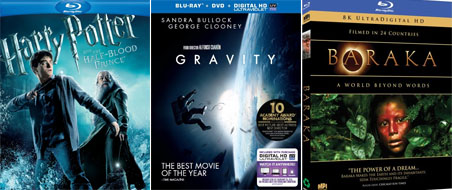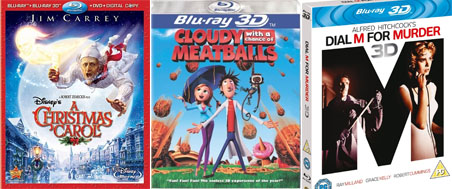Samsung PN51F8500 Review: A 51-Inch Plasma HDTV With SmartHub
Only two companies still make plasma TVs, so we’re excited to check out Samsung’s latest, the PN51F8500. It boasts 3D, SmartHub 2.0, and superb image quality. In the vast ocean of LCD televisions, it’s a compelling choice. Our lab results show you why.
Real-World Testing: Movies and 3D
As a top-line model, Samsung endows the F8500 with its full SmartHub suite of apps and connectivity, as well as the ability to watch 3D formats (native or converted from 2D). Built-in Wi-Fi lets you stream content from the Internet, a NAS array, or other resources attached to your home network. There’s WiDi functionality as well, facilitating streaming from another WiDi-enabled device with or without a local wireless network.
I spent a few afternoons watching movies and surfing through online material. For testing with Blu-ray media, I connected an Oppo BDP-93 3D player via HDMI. Audio was played through the built-in speakers, which I set to the Amplify option.
First I wanted to try out a few dark-scene torture tests, so I chose Harry Potter and the Half-Blood Prince. The opening of the film takes place at night on a dimly-lit street. Most LCD panels look gray and washed-out trying to reproduce this. But the F8500 rewarded me with truly rich blacks that were loaded with detail. Roof shingles and dirt on the sidewalk were plainly visible. Close-up shots of Harry and Dumbledore revealed every pore and hair on their faces.
I took some time to try the Motion Judder Cancellation (frame interpolation) feature, too. On the Standard setting, it increases motion resolution to the point of perfection. It also imparts a soap-opera effect, however, which I personally don't like. Aside from an occasional tearing artifact, the algorithm works well. I prefer to use this feature for sports and games. Then I turn it off while watching movies or TV shows.
Next up was Alfonso Cuaron’s superb film, Gravity. Only a plasma or OLED TV can pull off a black starfield with bright objects in the foreground. In 2009, when I added a Pioneer Kuro to my living room, I wondered if anything could match its black levels. As it turns out, Samsung comes really close. But the F8500 is just a hair less black than my PRO-111FD. That didn't diminish my enjoyment of the movie, however. And I didn’t miss the motion blur I’m accustomed to seeing when I watch the same disc on an LCD television.
I finished my 2D viewing with Baraka, which represents the pinnacle of image purity. There are no computer-generated scenes whatsoever. It’s just some of the cleanest and most beautifully shot 70 mm film ever. Created from an 8K transfer, this one makes a great test for a display’s color and detail rendering. The F8500 passed the test with flying colors, to draw on the old cliché. I loved how natural and perfectly saturated the palette was in both indoor and outdoor scenes. And detail was tack-sharp. With no anti-glare layer to speak of, you’re able to see the TV’s absolute maximum resolution.
3D displays have come a long way in just a few years. The technology still hasn’t caught on, but manufacturers continue making each new model year just a little better. I dropped A Christmas Carol into the player mainly to check out its darker scenes. The F8500 puts out plenty of light for an excellent 3D effect. Even the dimmest content was loaded with detail. Contrast was the best I’d seen on any 3D display to date. And detail was off-the-charts sharp. I managed to see hairs on Scrooge’s nose I hadn’t noticed previously.
Get Tom's Hardware's best news and in-depth reviews, straight to your inbox.
Cloudy With a Chance of Meatballs is an older title that can expose crosstalk and ghosting on some displays. There was none of that on the F8500. Every scene was perfectly rendered with a nice deep stereo effect.
I finished up with a vintage 3D title, Dial M For Murder. Even though it’s a 60-year-old film, it was originally shot in 3D. The transfer is poor with a general softness throughout. Its color is solid though. I initially saw a lot of crosstalk, but then I adjusted the Perspective slider in the 3D menu. Moving it to the left a few clicks helped clear up the artifacts. Samsung's F8500 is the only HDTV I’ve seen with this feature, and it certainly came in useful.
Current page: Real-World Testing: Movies and 3D
Prev Page Setup And Calibration Of The Samsung PN51F8500 Next Page Real-World Testing: SmartHub
Christian Eberle is a Contributing Editor for Tom's Hardware US. He's a veteran reviewer of A/V equipment, specializing in monitors. Christian began his obsession with tech when he built his first PC in 1991, a 286 running DOS 3.0 at a blazing 12MHz. In 2006, he undertook training from the Imaging Science Foundation in video calibration and testing and thus started a passion for precise imaging that persists to this day. He is also a professional musician with a degree from the New England Conservatory as a classical bassoonist which he used to good effect as a performer with the West Point Army Band from 1987 to 2013. He enjoys watching movies and listening to high-end audio in his custom-built home theater and can be seen riding trails near his home on a race-ready ICE VTX recumbent trike. Christian enjoys the endless summer in Florida where he lives with his wife and Chihuahua and plays with orchestras around the state.
-
Nuckles_56 People still buy plasma screened TV's? I thought they went out like the floppy disk...Reply -
Merry_Blind Damn Samsung TVs have so much lag... They have amazing picture quality, but aren't fast enough for proper gaming... sigh... bring on the OLED!!!Reply -
n3cw4rr10r Am I the only one who thinks this is overpriced? especially with 4k TVs getting close to this range (Vizio P series will be out soon for $1000).Reply -
n3cw4rr10r Am I the only one who thinks this is overpriced? especially with 4k TVs getting close to this range (Vizio P series will be out soon for $1000).Reply -
colson79 It is such a shame everyone bailed on Plasma TV's, I still have one and the picture quality blows away LCD in the home theater. Hopefully my Plasma will last until OLED is reasonable. It would suck having to go to LCD.Reply -
jkhoward I love the quality of Plasma TV's.. I truly hope they keep developing this technology.Reply -
DisplayJunkie @Nuckles_56 your level of ignorance is astronomical yet not uncommon; you are making a fool of yourself.Reply
@n3cw4rr10r It's not overpriced at all, but rather an outstanding value (though not as good a value as the sorely-missed Panasonic P50ST60). The image quality is tremendously better than any 4K TV, even with perfect 4K source content, even if they sold the 4K TVs for $1500 or less. The difference in contrast(dynamic range) is the most important, and it is huge. Side-by-side with the plasma, no one would pick any 4K LCD. -
nthreem It's worth noting that Samsung announced it will discontinue production of plasmas at the end of the year. Better pick one up soon!Reply
I got a Panasonic VT60 at the beginning of the year, just as stock was running dry. I'm still amazed by the picture quality. -
Nintendo Maniac 64 ReplyHopefully my Plasma will last until OLED is reasonable.
Actually OLED is arguably already there or getting there. Some people were able to pick up LG's 55" OLED TV for $2000 (not a typo) via in-store at Microcenter.
For a more universal price-point, it's newest revision is now going for $3500. -
photonboy ReplyDamn Samsung TVs have so much lag... They have amazing picture quality, but aren't fast enough for proper gaming... sigh... bring on the OLED!!!
Most HDTV's have a "GAMING MODE" option which disables video processing inside the HDTV for a particular HDMI input such as your game console might use.
Having said that, burn-in issues have never been completely solved so I wouldn't game on a Plasma anyway (seems an important thing to mention doesn't it?).

